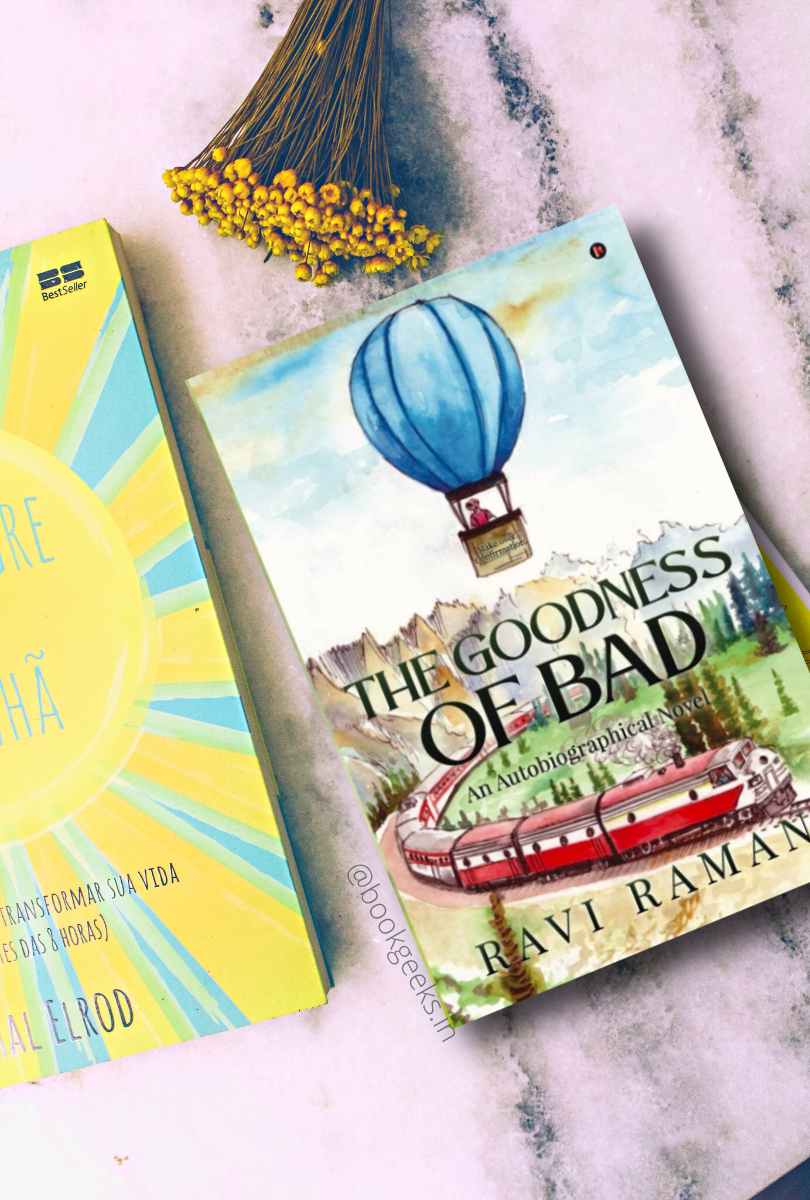CONCEPT: 4/5 WRITING: 3/5 ENTERTAINMENT: 3/5 MESSAGE: 4/5 OVERALL: 3.5/5
“At the age of nineteen, I had coined the phrase, “The Goodness of Bad”. It had its origin in my realization that all emotions, sentiments, and physical phenomena are twin edged. The meaning I extracted from this was if I have to understand what is good, then I must necessarily accept the existence of bad.”
– Ravi Raman, The Goodness of Bad
My musings
It’s been quite a while since I last read an autobiographical work, hence after a series of romances and thrillers, this was quite a lovely escape. Some notable autobiographical works that I have read over the years include A River in Darkness by Masaji Ishikawa, Born Again on the Mountain by Arunima Sinha, When Breath Becomes Air by Paul Kalanithi, My Days: A Memoir by RK Narayan, etc.
To add to my list of biographies, memoirs, and autobiographical works, The Goodness of Bad seemed like a good read. After all, I had read many works by famous personalities, but what about the lives and times of ordinary people like you and me? What about their stories? Surely, there must be a thing or two to learn from their life journeys too.
With that thought in mind, I sat down to read Ravi Raman’s The Goodness of Bad, which is described by the author as an autobiographical novel.
What to expect?
Expect a medium-length slow paced read that traverses the journey of the author’s life. Expect a book that offers some deep insights into the practicalities and realities of everyday life. Expect a book that will inspire you to be a better version of yourself. In the author’s trials and tribulations, success, and joys, you will find a striking resemblance to your own life. Expect a book that documents decades of living Indian history not from the point of view of great men and important events but through the eyes and experiences of an ordinary Indian.
Who can read?
The language is simple and the writing is smooth, thus the book can be picked by any level of reader. However, the content is such that it may appeal only to a specific category of readers.
What is the book all about?
In the author’s own words, “The Goodness of bad is about this journey of my life in the form of a story and the interesting learnings and observations I would love to share with the readers.”
Is the book interesting to read?
As the author recollects his journey so far, he touches upon many topics that the reader finds both interesting and relatable. From his earliest memories as a mere toddler pulling a Houdini act to his days in Mithapur, Gujurat where his father was employed in the Tata Chemicals plant to his life in Delhi as a young child and then in IIT Powai campus as a young adult.
Since most of these young memories come from the period of the 1950s to early 1970s which were some of the most dramatic years in Indian history, the memories that the author shares give us a sneak peek into what life was like for an ordinary citizen of India.
Some of the details that he recalls are most vivid and are a treasure trove of unparalleled memories. Like the satirical cartoons of RK Laxman evoking images of the Himalayan Blunder and the deep sense of humiliation felt on a much more personal level at the hand of China.
In one of the anecdotes the author fondly recalls his tryst with Mr. Jairam Ramesh who later rose to one of the highest echelons of power by becoming a Member of Parliament and also a Minister in the Central Cabinet.
Later, as India deals with new challenges and societal changes, the author also shares his own experiences of the same. A large part of the book is also about his family and his work life. From navigating the challenges faced because of labour unions to meandering through the romantic lanes of first love, the author pours his heart out in the most candid and confident way.
What did I love the most?
The book is reflective and most of the ponderings also make you contemplate the larger things in life. I loved the unique angle that I got to read about from the 1950s to the 1980s. I also loved how deeply the author felt about women’s empowerment.
“Forgiving and begging to be forgiven,
from my past I chose to break free.
Slowly but surely, I began to untether
My encumbrances unmindful of questions of how and why.
Till one day, unshackled and free,
I gently lifted like a helium balloon and moved up into the sky.”
What could have been better?
In many places, the book seemed a little dull and monotonous. This was especially true for the sections that contained a lot of technical details. For a layman like me, this was quite difficult to navigate; after a point, it became too cumbersome. Large essay-like paragraphs also proved to bring down the entertainment quotient, if only by a small bit. I would have loved it if the flow was much faster and the chapters and paragraphs much shorter.
Can’t wait to read it? Buy your copy of The Goodness of Bad using the link below.
